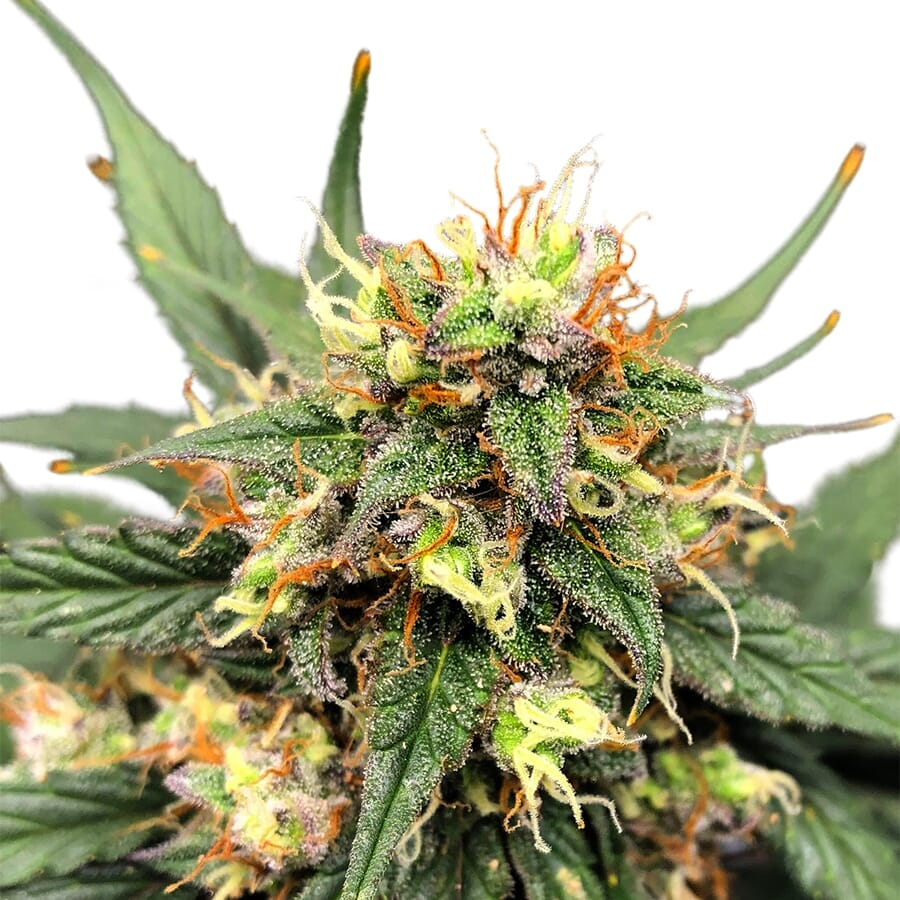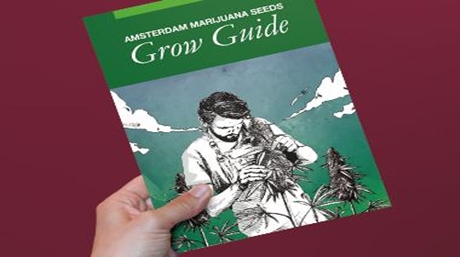Marijuana Grow Guide
Introduction
Choosing to grow your own, marijuana may be one of the best decisions you’ve ever made. There are many benefits to growing your own, weed instead of just buying it. You will know exactly what you are smoking and how the plant was treated. You will know if it has any chemical residue on it and the quality of the plant. Any grower will tell you, smoking the bud you grew yourself has a particular satisfaction to it that you cannot get with purchased bud. It’s a fun and exciting endeavor and you will probably never want to return to buying your bud.
Anyone can grow marijuana. You don’t necessarily need a lot of tools and equipment, especially if you are growing outdoors. With this all-inclusive cannabis guide, you will understand the basics of the different types of cannabis, the cannabis life cycle, and how to grow and harvest incredible buds.
Chapter 1: Types of cannabis and their effects
Cannabis indica, cannabis Sativa, and cannabis Ruderalis are three species of the genus cannabis. They all belong to the group of plants that have psychoactive properties. However, they differ in both their effects on the user and the way they look.
Cannabis Sativa
Cannabis Sativa grows the tallest of the three. Their buds are airy and they have thin pointed leaves. When you see the signature picture of a cannabis leaf, it is usually the Sativa dominant leaf. Since they grow the biggest, they normally also have the largest yields. The effects you can expect from consuming a Sativa dominant strain are energizing, uplifting, increased creativity, cerebral head buzz, increased focus, promote a general feeling of wellness, and reduced nausea.
Cannabis Indica
Cannabis Indica can be recognized by their short, bushy, and stocky stature. Their leaves are fan-like and the fingers of the leaves are broad. They normally have good genetics to grow thick dense buds. Indica strains are known to have higher CBD content than Sativas. When consuming an Indica-dominant strain you can expect to feel sedated, relaxed muscles, pain relief, reduced inflammation, body buzz, reduced stress and anxiety, and it is good for treating insomnia.
Cannabis Ruderalis
Cannabis Ruderalis is the smallest of the three, and it has narrow palmate-shaped leaves. What really sets cannabis Ruderalis apart is that it switches automatically from the vegetative phase to the flowering stage with age instead of needing the schedule of 12 hours of light, 12 hours of darkness. It also has a shorter growth period so you can have quicker and more harvests per year. These things make it popular with beginners and those without an ideal climate or grow space. Ruderalis does not have a psychoactive effect in itself.
It has been interbred with sativa and indica plants to take on their psychoactive traits but still, remains autoflowering after crossbreeding. Even though these three species, sativa, indica, and Ruderalis come from distinct separate families of cannabis they can all be interbred. In fact, most strains today are hybrid strains. This has allowed breeders to create incredible strains with customized traits.
Chapter 2: Seeds
After you have decided which type of cannabis suits your needs you will then have to decide which kind of seeds you want to buy-feminized, regular, or auto-flower. Once you understand the difference between the three then it will be easy to decide which one you’ll want to grow.
a. Feminized Seeds
The most popular kind of seed is feminized and for good reason. Only female seeds produce the cannabinoid-rich sensimilla buds that growers harvest and you like to smoke. Feminized seeds are produced, in a special way so that it only produces female seeds. Buying feminized seeds will take the guesswork out of sexing your plant and save you a lot of time and space. It’s a terrible feeling when you spend weeks nurturing a plant and it ends up being male.
What’s even worse is that the male plant could pollinate your female plants and you end up without any bud. Also, regulations force growers in certain areas to only be able to plant a certain amount of cannabis, you wouldn’t want to waste it on growing male plants that you end up throwing out. All in all, if you want to have bud, get feminized seeds.
b. Regular Seeds
Regular seeds are a mix of male and female seeds. Naturally, cannabis plants produce a ratio of 50% male to female seeds. There is no way of telling if the plant will be male or female before the flowering phase. When male and female seeds are grown together then eventually male plants will pollinate the female plants and they will produce seeds that makes the buds poor quality for harvesting. Male plants are only useful to breeders. You will find that regular seeds are less expensive than the feminized ones, however, it may be worth the extra expense to know that you will have female plants.
c. Autoflower Seeds
Autoflower seeds are seeds with the genetics of cannabis Ruderalis to make the plants flower automatically with age. With auto-flower seeds, you get the benefit of feminized seeds along with the benefits of Ruderalis plants. They are easier to grow, they have a short growth period, and they are great for subtle growing due to their small size. Their size, however, may also be a drawback since they will produce smaller yields.
Chapter 3: Life cycle of the cannabis plant
Importance of the cannabis life cycle. The life of a marijuana plant consists of incredible changes that allow it to go from a small seedling to a large bushy plant with flowers that you can smoke. When you begin to grow it is important to know the stages of a marijuana plant so that you will know what to expect and be able to notice if something is not right. Knowing at which stage your plant is in will allow you to give it the proper nutrients, light, and water so that you end up with a flourishing plant. The four main stages that a marijuana plant goes through from seed until harvest time include: germination, seedling, vegetative, and flowering.
a. Germination
It all begins with a seed. The seed of the marijuana plant is dormant and needs water to bring it to life. This process is called germination and can start anywhere from 24 hours and can take up to 7 days and sometimes even more. The wet seed will then sprout its taproot and can then be placed in a growing medium. The taproot will grow downward into the growing medium as the stem grows upwards and then two cotyledon leaves will grow from the stem. The cotyledon leaves will take in the sunlight allowing the roots to develop along with the first fan leaves. Now your plant is considered a seedling.
b. Seedling stage
Specific traits define a plant seedling. It must have developed a stable root system and true leaves, which means it has leaves that look like the iconic marijuana leaves we can all recognize. During this stage, a seedling will grow anywhere from 4 to 8 leaves. A cannabis plant can stay in the seedling stage for a broad range of time but normally around 3 weeks. This all depends on environmental factors like the soil, the amount of water the seed gets, the quality and amount of light, and the specific strain that is being cultivated. A healthy seedling will be short with dense vegetation, and it should not seem to be reaching for sunlight. The leaves should look bright and green. During this phase, the seedling is particularly vulnerable to mold and diseases. The seedling’s environment should be kept clean and without excess moisture. Avoid overwatering the seedling as its roots are still small and don’t require very much water
c. Vegetative stage
The next stage is the vegetative stage; this is when the marijuana plant really, begins to take off. In this stage, the plant starts to show big jagged leaves and produces much more foliage since it is now able to absorb and process much more nutrients and carbon dioxide.
The growth of the marijuana plant will mainly depend upon the rate that its leaves can gather sunlight and undergo photosynthesis. This is why during the vegetative stage you will need to give your plant about 18 hours of light if it’s grown indoors. It’s at this stage that you can begin topping and training the marijuana plants.
Your plant will need lots of nutrients in this stage such as higher levels of nitrogen. You will also need to give it more water and not just close to the stalk but around the plant as well so that its growing roots get water too. It is during this stage that it is possible to determine if the plant is male or female based on the pre-flower located at the nodes. As soon as you are able to determine the sex of the plant you will need to separate the males so they don’t pollinate the flowering female plants.
The pre-flowers that you are looking for are found at the “V” where the plant’s stems come together at the main stalk. You may need to check different locations on the plant since the pre-flowers show up at various places, especially closer to the top of the plant. The male plant will have very small spade-shaped (spade-liken a deck of cards) pre-flowers. When the plant matures, these spade-shaped preflowers will become pollen sacs and look like a bunch of grapes. The pre-flowers on a female plant will not look like a spade, instead, it will be long and narrow. Eventually, a white pistil will begin to stick out from the top.
d. Flowering stage
The flowering stage is the final stage of the marijuana plant. It’s the one every grower anticipates the most. When the plant receives less than 12 hours of light either naturally outdoors or when you shorten the light cycle indoors the plant starts the flowering stage. Beautiful resinous buds develop in this stage and your plant grows rapidly, sometimes doubling in size. Because of this growth spurt, your plant will need special blooming nutrients and you may need to use a stake or trellis to give your plant support as it develops buds. The trichomes on the buds will let you know when the marijuana plant has reached full maturation you can begin the harvest.
Every stage of the marijuana plant has its own, unique characteristics. Knowing the stages will allow you to give your plant the right nutrients along with an environment that will allow it to flourish.
Chapter 4: How to choose the right kind of strain for your climate
At this point, you may be questioning which seeds are best for your climate. Sativa, Indica, or what type of cannabis should you plant that will prosper best where you live?
Know your climate
You should become familiarized with the climate you plan on growing in. I mean, not just knowing from living in it, but learn about the yearly average temperatures and weather patterns. You will be playing weatherman for the growing season so you need to predict wisely what climate you will be dealing with. The temperature, exposure to sunlight, seasonal changes, and altitude all play an important role in your marijuana plant’s life cycle. Most often, March and April will be the best time to start germinating.
This is because when your plants are flowering it should be around August to September; that’s when the hours of daylight begin decreasing. This is different for autoflower plants since they can be grown more frequently in the year since they do not rely on the hours of sunlight to flower.
Different strains prosper in different climates
Because different strains prosper best in particular climates, it wouldn’t be smart to plant a seed that grows best in cooler regions if you live in sunny Florida. Different strains of cannabis evolved in various regions all over the world and they have distinct physical features that show in which area they came from. For instance, strains that evolved from tropical areas have smaller leaves and lots of flowers. If a strain originated from the Middle East or from Central Asia it will have bigger leaves with very dense buds.
One of the main reasons behind this evolution of strains is the amount and the intensity of sunlight the plant receives. A plant that doesn’t get a lot of sunlight will have larger leaves so that it has more surface area to absorb as much sunlight as it can possibly get. If a cannabis strain has small leaves then it’s most likely from an area that receives plenty of intense and steady sunlight, and it doesn’t need leaves with a large surface area to absorb extra sunlight.
You may think that leaf size won’t make much of a difference in your harvest, but if a plant gets what it needs, enough sunshine and whatnot, it will flourish best. If you live in a region with weak sunlight or where it rains often, then you will want to choose a type of marijuana that has a larger leaf size so that it can get enough sunlight to produce big buds for you.
Indicas, Sativas, and Hybrids all flourish best in their own, different favorite regions as they all have unique physical features that allow them to cope in various climates.
The best climate for Indica strains
Indica cannabis strains originated in areas around Morocco, Tibet, Kashmir, and Afghanistan. Because Indicas have a shorter growing season than Sativas, they are perfect to grow in areas that have short summers. Locations between 30-50 degrees North and South of the equator will have an ideal climate for indicas. So, if by springtime the ground in your area is still frozen, then an Indica strain may be the type of strain you should go for. Since it grows in a shorter amount of time it doesn’t need a long summer to fully mature.
The best climate for Sativa strains
Sativa strains vary greatly from Indicas. They originated from tropical places like Thailand, Colombia, and Mexico. Ideally, locations between 30 degrees North and 30 degrees South of the equator, is where they flourish best. Although they come from the tropics many Sativa strains can also grow in cold temperatures if they get everything else they need like nutrition and sunlight and a bit of TLC. Since their leaves are thin and narrowly shaped you can guess that this strain needs more sunlight than an Indica.
It’s possible, that your personal smoking preference, is that you like how Sativas makes you feel, but you don’t have a very long summer where you live. In these kinds of cases choose a Sativa/Indica hybrid that cuts down on growing time, but still obtains characteristics of the Sativa high when smoked.
If you live in a temperate climate like in the Northern part of the USA, Eastern Canada, Northern Europe, or Southeast Australia then look into seeds like Purple Power, Lemon Ice, Light of Jah, or Happy Outdoor Mix.
There are some strains, that can even grow well in dry climates like in the Southwest parts of the USA, many continents of Africa, and central Australia. These are Durban Poison and Haze.
If you live in a cold climate where there can be a big difference in the minimum and maximum temperature in 1 day, like in someplace in Northern Europe and Canada, then strains like Early Misty, Purple Power, Lemon Ice, and Happy Outdoor Mix could work for you. Tropical climates are great for growing marijuana, there are many strains, that grow easily in these regions. Just to name a few, Light of Jah, Waikiki Queen, Strawberry Ice, and California Skunk will all flourish in the tropics.
Using this information, you will be able to get an idea of which kind of cannabis will do best in your climate. When you are growing indoors, you can pretty much grow any kind of cannabis as long as the growing space permits it.
Subscribe to our newsletter for more chapters
Want to know more about growing seeds into healthy plants? We update our Marijuana Grow Guide every week, if you’re subscribed you’ll be the first to hear about our promotions and grow guide updates.
















